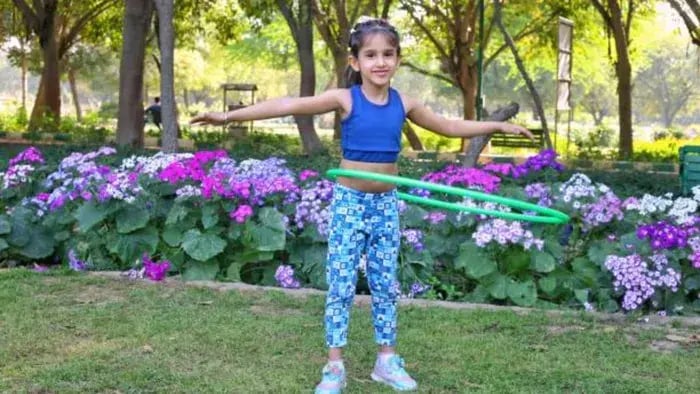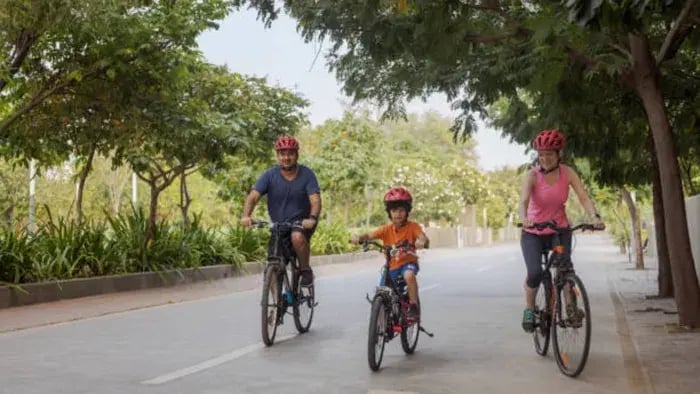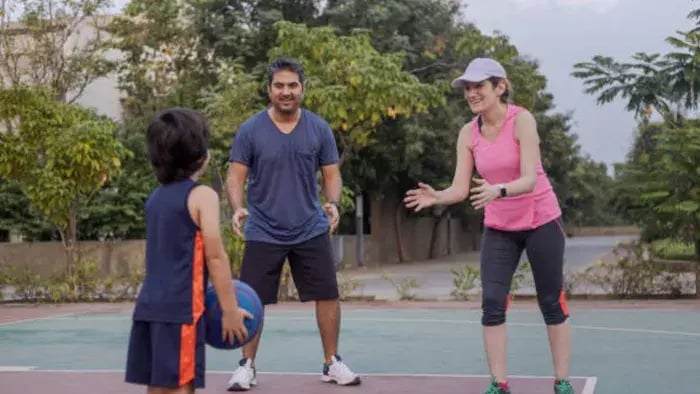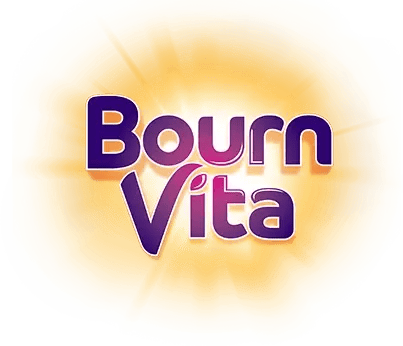- Builds Strength Without Overloading the Body
- Supports Mental Focus and Brain Function
- Enhances Sleep Quality
- Boosts Emotional Regulation and Mood
- Improves Social Skills Through Group Play
- Encourages Healthy Weight and Eating Patterns
- Builds Long-Term Habits for a Healthy Future
Introduction

Being active is about giving the body and mind the daily movement they need to grow, learn and thrive. Children and teens go through so much change during their growing years, and physical fitness plays a quiet but powerful role in supporting that. From developing motor skills and better posture to managing energy and emotions, movement offers age-specific benefits that go way beyond the playground or sports field.
At every stage, whether it’s a toddler learning to balance, a school goer managing screen time or a teenager coping with academic pressure, physical activity builds strength from the inside out. It improves focus, builds social skills, supports bone and brain development and even sleep quality. Not every child loves sports or dance, and that’s okay. The beauty of physical fitness is in its flexibility. As per a study published in Cochrane Database Syst Rev. 2021, climbing stairs, skipping in the garden, helping with household chores or doing yoga before breakfast, all these small movements add up over time.
Consistency and variety matter more than perfection. And what works best is finding age-appropriate routines that feel natural, fun and doable at home or outdoors. A good fitness routine adapts to each age group while staying rooted in joy, balance and body awareness.
7 Real Benefits of Fitness from Toddlers to Teens

Physical fitness isn’t one-size-fits-all. The way it supports a toddler is very different from how it shapes a teenager’s energy or mood. But no matter the age, one thing stays the same: movement helps children feel better, focus longer, and grow stronger. Here are seven important benefits of physical fitness, thoughtfully broken down to show how it supports kids and teens differently yet meaningfully.
Builds Strength Without Overloading the Body
From crawling and hopping to cycling or swimming, physical activity helps build muscles and strengthen bones. According to the Ministry of Youth Affairs and Sports, in toddlers, basic movements improve balance and posture. As they grow older, structured activities like skipping, yoga, or climbing add resistance naturally without the need for weights. This keeps development age-appropriate and safe, especially for growing bones and joints.
Supports Mental Focus and Brain Function
As per a study published in Ann Neurosci. 2021, fitness boosts blood flow to the brain, which helps with memory and learning. For preschoolers, active play improves attention span and task-switching. For teens, workouts like running, brisk walking, or martial arts can help reduce anxiety and improve concentration during study hours.
Enhances Sleep Quality
Study published in, Acta Med Litu. 2023, shows that regular movement helps regulate your child’s sleep cycle. Toddlers and younger kids who move more during the day tend to fall asleep faster and deeper. For teens dealing with sleep delays or screen-induced fatigue, even light evening exercise can improve melatonin production and promote better rest without medication.
Boosts Emotional Regulation and Mood
According to the Centers for Disease Control and Prevention, CDC, physical activity helps release endorphins, the brain’s natural feel-good chemicals. Whether it’s jumping, dancing, or simply walking with music, regular movement helps manage mood swings, especially during hormonal years. Kids who move often also show better control over frustration, anxiety, and hyperactivity.
Improves Social Skills Through Group Play
According to WHO, games and group sports naturally encourage communication, empathy, and patience. Young kids learn to wait their turn or celebrate a team win. Older children practice leadership, collaboration, and fairness. Fitness creates moments of bonding that go beyond screens and homework.
Encourages Healthy Weight and Eating Patterns
Physical activity helps balance metabolism and appetite. According to the Dietary Guidelines for Indians-2024, it encourages children to listen to their body’s signals of hunger and fullness. For teens, it can shift the focus from appearance to strength and stamina, promoting a healthier body image. It also builds interest in hydration and nutrient-rich foods after a good session of exercise.
Builds Long-Term Habits for a Healthy Future
According to the Ministry of Youth Affairs and Sports, introducing fitness in fun, age-appropriate ways builds lasting habits. Children who enjoy being active are more likely to continue it into adulthood. Whether it’s daily walks, a weekend hike, or family yoga, these habits grow into lifelong self-care tools.
Conclusion

Fitness is a foundation for life. For your child, every jump, stretch, or dance move builds more than stamina. It builds awareness, balance, confidence, and joy. The goal is to help your child tune into their body, feel strong in their skin, and learn how movement can be both fun and functional. Start small, stay consistent, and let each age discover its own rhythm.
Her love for storytelling began with reading her grandfather’s speeches, where Tarishi saw the power of words in creating lasting memories. Combining her passions for food and writing, she has turned her life into a fulfilling path of sharing stories that celebrate flavours and how food brings communities together.
The views expressed are that of the expert alone.
The information provided in this content is for informational purposes only and should not be considered a substitute for professional medical advice, diagnosis, or treatment. Always seek the advice of your physician or another qualified healthcare provider before making any significant changes to your diet, exercise, or medication routines.
References
https://www.nin.res.in/dietaryguidelines/pdfjs/locale/DGI07052024P.pdf
https://www.who.int/health-topics/physical-activity#tab=tab_1
https://www.cdc.gov/physical-activity-basics/benefits/index.html
https://pmc.ncbi.nlm.nih.gov/articles/PMC10417015/
















